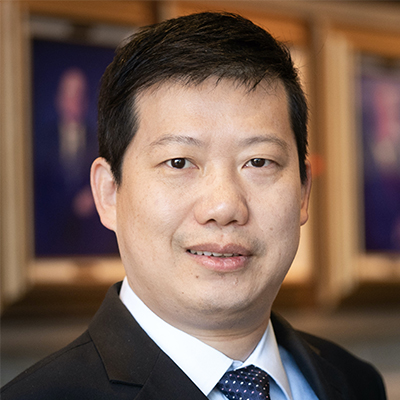 The Electrochemical Society hosted Dr. Yan Yao’s live webinar, “Next-generation Batteries for Electric Vehicles and Stationary Storage” on February 24, 2021. Yao is a Cullen College of Engineering Professor at the University of Houston (UH), U.S.
The Electrochemical Society hosted Dr. Yan Yao’s live webinar, “Next-generation Batteries for Electric Vehicles and Stationary Storage” on February 24, 2021. Yao is a Cullen College of Engineering Professor at the University of Houston (UH), U.S.
Yao has led research on the fundamental study of energy storage materials and devices, spanning from solid state batteries for electric vehicles to multivalent ion batteries and aqueous batteries for grid energy storage. He has authored more than 110 journal articles with 25,000 citations and holds 10 U.S. patents. A Fellow of the Royal Society of Chemistry and Senior Member of the National Academy of Inventors and Institute of Electrical and Electronics Engineers, Yao received the Office of Naval Research Young Investigator Award (2013), UH Teaching Excellence Award (2016), UH Research Excellence Award (2018), Top 1% Clarivate Highly Cited Researcher (2018), and Scialog Collaborative Innovation Award (2018 and 2020). Yao founded the ECS University of Houston Student Chapter in 2016, and continues to serve as the chapter’s Faculty Advisor.
NOTE: Registration is required to view the webinar.
ECS thanks Hiden Analytical, the generous sponsor of Dr. Yan Yao’s webinar.
Q&A
Q1. What is the future landscape of magnesium (Mg) ion batteries? Would they be able to compete with commercial Li-ion batteries in terms of behavior as well as state of technology?
Magnesium (Mg) ion batteries are better viewed as alternative solutions for large-scale energy storage rather than a direct competitor of lithium-based batteries in the race towards ever-rising energy density targets.
Q2. Please comment on the self-discharge behavior of the solid state batteries in the first part of your talk.
We did not consider self-discharge an important issue in solid state batteries and thus did not study the behavior.
Q3. With the PTO (pyrene-4,5,9,10-tetraone) cathodes, you show that the material is soluble after the first 2e- step; how do you achieve stable cycling when the cathode is soluble for half of the cycling?
We chose conductive carbon and separator films that have trapping capabilities towards organic molecules.
Q4. You showed coulumbic efficiencies of >100%, but still sustained cycle life —what is the source of this additional capacity?
The shuttling of the partially discharged organic cathode is the most likely origin.
Q5. Do you observe radical anion formation in the carbonyl reductions? Is it certain that each coordination site undergoes a 2e- reduction?
We don’t have data for or against the radical nature of the reduction products. A 2-e reduction is a prerequisite for the proposed coordination.
Q6. Please comment on the temperature effect on electrode level and operando test cell level.
We are studying this effect and will soon discuss the results.
Q7. How about combining the Stanford Li-B-S solid electrolyte with the MIT Mo6S8 cathode and ELI/MIEC anode?
Someone may have been working on it!
Q8. What is the redox center in PTO?
The redox center in PTO is the carbonyl groups (C=O).
Q9. Do you see any advantages in moving from small organic molecules such as PTO to polymers for use in electrodes?
That could reduce the material’s solubility in liquid electrolyte-based cells, though the merit comes with compromises such as synthetic complexity.
Q10. What is the future scope for Mg-ion fuel cells?
Mg-ion batteries are better viewed as alternative solutions for large-scale energy storage rather than a direct competitor of lithium-based batteries in the race towards ever-rising energy density targets.
Q11. What will be the applications for Mg-ion / Al-ion batteries in the future?
Multivalent metal-ion batteries are better viewed as alternative solutions for large-scale energy storage rather than a direct competitor of lithium-based batteries in the race towards ever-rising energy density targets.
Q12. How do you manage and push your group to have such fruitful progress?
Hard-working group members and a collaborative group culture help us progress in the right direction.
Q13. Have you studied the degradation of PTO molecules during the redox process?
We didn’t expect much degradation for PTO molecules in a solid state electrode, unlike materials in a fully dissolved flow battery, but this is a good direction to explore.


